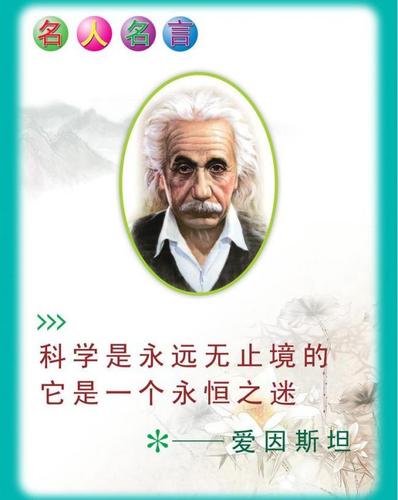
汉译英的词语处理
词汇语义对比
两种语言中存在许多不相对应的词语,主要表现为词语的空缺和词义的差别。
车-vehicle, car, truck, lorry, cart
船-vesl, boat, ship, ferry, canoe
门-door, gate
酒-wine, liquor, spirit, beer
人-man, woman
穿,戴-wear
臂,膊-arm
姑,婶,姨-aunt
姐,妹-sister
表兄弟,表姐妹-cousin
舅舅从桌上把花瓶拿去了。
Mother’s brother has taken the va away from the table.
词汇的语法对比
汉英词类划分的理据比较及对汉英翻译的意义
汉语词类的划分主要依据词义,即词义的实与虚、动与静、具体与抽象等。英语的词类依据是语法,词类与句子成分有严格的对应关系。
理据的不同造成汉英词类的名同实异,从翻译理论上说,这就是词语“转类法”这一翻译技巧的语言理据。
由于汉英词汇意义存在不对应现象,翻译时应通过各种手段对靶语(英语)的词义加以补充或限定,技巧上表现为词语的增减、阐释、借用、音译等。
1、我进去看了,只记得门警是瑞士兵士,穿着黄色制服,别的没有印象了。
I went there to have a look. All I remember now is that the guards at the entrance were Swiss soldiers in yellow uniforms.
汉语为加强语气,对于一件事,往往从一个方面说了之后,还要从另一个方面说一说。英语则不然,前面有了All I remember now is ...,后面如果再说and I don't remember anything el,就显多余。
“方面”、“方式”、“问题”、“情况”之类的范畴词,在汉语句子里没有多少实际意义,但很有用,可以使句子流畅。汉译英时,范畴词可以不译,英译汉时,可以酌情使用。
中国有12亿多人口,陆地自然资源人均占有量低于世界平均水平。
China has a population of more than 1.2 billion, and its land natural resources per capita are lower than the world’s average.
此处“水平”未译。
由于词汇使用频率的不对应,翻译时不能拘泥于字面的对应,而应以整体意义为重,灵活变通。
技巧:某些词汇手段表达的意义,可以用另外的词汇来表达,甚至使用非词汇手段达到目的。
1、前门驱虎,后门进狼。
Fend off one danger only to fall prey to another.
译文中不见了“前门”、“后门”、“虎”和“狼”。
2、汉语表示疑问句用语气助词“吗”,英语则使用词序倒装。
3、汉语用时态助词表时间,英语里用动词变化表时态。
4、汉语用词汇手段,英语用语法手段。
语义的分类
指称意义
言内意义
语用意义
指称意义的翻译
直译法/直译加注—— 完全保留汉语的指称意义
意译法——求内容相符和主要语言功能相似
音译法——直接用汉语拼音或用类似英语单词的拼写体现原文的发音
音译意译结合法 ——在拼音之前或之后加上一个表意的词;直接套用谐音谐义的英语单词
a. 直译法/直译加注—— 完全保留汉语的指称意义
芦笛岩是桂林最精彩的岩洞。
Reed Flute Cave/Ludiyan/Ludi Cave is the most magnificent of all in Guilin.
1990 年共批准 “ 三资 ” 企业 99 家,全省 “ 三资 ” 企业已达 284 家。
In 1990, the Province approved 99 “Three Forms of Ventures” (Sino-foreign join ventures, cooperative enterpris and wholly foreign-funded enterpris), the total number of the “Three Forms Of Ventures” reached 284.
b. 意译法——求内容相符和主要语言功能相似
在农村,特别是比较偏僻落后的农村,还残存着少数包办婚姻的陋习。
In China’s more remote and backward rural areas, corrupt practices exist in the form of forced marriages./arranged or Bought and sold marriages.
c. 音译法——直接用汉语拼音或用类似英语单词的拼写体现原文的发音
西苑饭店
Xiyuan Hotel
康顺有限公司
Conson Ltd.
磕头
d. 音译意译结合法 ——在拼音之前或之后加上一个表意的词;直接套用谐音谐义的英语单词
kowtow
绿丹兰
Ludanlan cosmetics
“ 稳得福 ” 酒楼
Wonderful Restaurant
《唐明皇》(电视剧名)
Emperor Tang Ming Huang
“ 索 ” 牌(塑料绳具的商标)Solid
言内意义的翻译
重复 (同词重复,异词重复)
叠词
双关
音韵
a. 重复 (同词重复,异词重复)
沉默啊!沉默啊!不再沉默中爆发,就在沉默中灭亡。
Silence! Silence! Unless we burst out, we shall perish in this silence.
不知不觉
Time went by and before I was aware of it…
谢天谢地
Thank Heaven! Thank God!
b. 叠词
小路两边,是两行小柳树。树枝细细的,柳叶沙沙响。嫩叶上刷着一层白色的绒毛…
Two rows of small willows lined the path. The twigs were slender , with rustling leaves covered by a layer of white villus.
寻寻觅觅,冷冷清清,凄凄惨惨戚戚。
I look for what I miss, I know not what it is, I feel so sad, so drear. So lonely, without cheer.
c. 双关
在试纺,顶多忙一阵子,过了几天,还不是 外甥打灯笼 —— 找舅(照旧) 。
And if we’re now going to have a check spinning, it’ll only mean that we’ll be busier than ever for a spell and then after a few days things will be back to that they were before.
d. 音韵
一册在 手 ,纵览全 球 。(《环球》杂志征订广告)
The Globe brings you the world in a single copy.
语用意义的翻译
文化色彩的再现
语体色彩的复制
感情色彩的叠合
语用意义的翻译
a. 文化色彩的再现
鸡皮疙瘩
Goo flesh
猫哭老鼠假慈悲
To shed crocodile tears
狗改不了吃屎
The leopard cannot change his spots.
红眼病
be green-eyed
开门红
get off to a good start
红白喜事
weddings and funerals
红榜
honor board
b. 语体色彩的复制
如蒙早日寄来样品或产品册,不胜感激。
It would be appreciated if samples and /or brochure could be soon forwarded to us.
鄙人当尽力而为。
Yours truly will do his best.
c. 感情色彩的叠合
爱屋及乌
Love me, love my dog.
金鸡鞋油:颜色有黑、棕、白、红、黄、蓝。
Golden Rooster Shoe Polish comes in black, brown, white, red, yellow and blue.
小节
本节课主要讲解词语的翻译,分别举例说明了具有指称意义、言内意义或语用意义的词的各种译法。一个词语可能具备指称意义,也可能既具备指称意义,又具备言内意义和语用意义。因此,翻译时,应力求全面理解原文意义,然后根据需要,采取直译、意译、音译或音译和意译相结合的方法,力求使译文与原文语义相符、功能相似。
